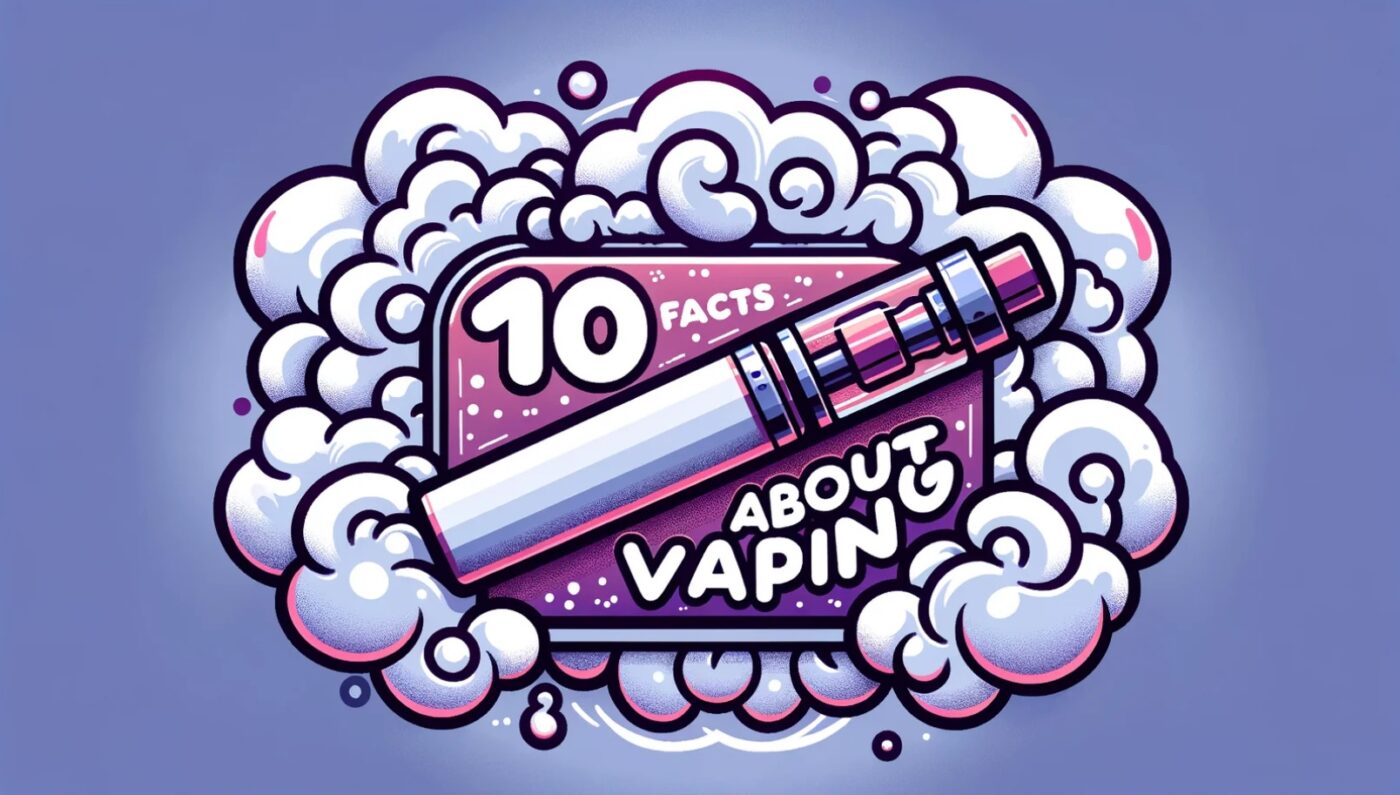Vaping Unveiled: 10 Facts About Vaping

Vaping has rapidly become a cultural phenomenon, especially among younger generations. While it was initially marketed as a safer alternative to traditional smoking, the world of vaping is complex and multifaceted. Here are ten intriguing facts about vaping that shed light on its impact, technology, and controversies.
1. Origins and Evolution
Vaping, as we know it today, originated in China in the early 2000s. Hon Lik, a Chinese pharmacist, is credited with inventing the modern e-cigarette in 2003. This invention was initially a way to help smokers quit traditional cigarettes by providing a less harmful alternative. Over the years, vaping devices have evolved from simple e-cigarettes to advanced mods and pod systems, catering to a wide range of preferences.
2. Ingredients in E-liquids
The primary ingredients in e-liquids, also known as vape juice, are propylene glycol (PG), vegetable glycerin (VG), nicotine, and flavorings. PG provides the throat hit, while VG produces vapor. The amount of nicotine can vary, allowing users to control their intake. Some e-liquids are even nicotine-free, appealing to those who enjoy vaping purely for the flavors.
3. Health Risks and Benefits
While vaping is often marketed as a safer alternative to smoking, it is not without risks. E-cigarettes expose users to fewer toxic chemicals than traditional cigarettes. However, the long-term health effects are still unknown. Studies suggest that vaping can still cause lung damage and other health issues, particularly with prolonged use. On the flip side, for smokers struggling to quit, vaping may offer a less harmful way to transition away from tobacco.
4. Popularity Among Youth
One of the most significant concerns about vaping is its popularity among teenagers. The sleek, high-tech design of many vaping devices, coupled with appealing flavors like candy and fruit, has made vaping particularly attractive to young people. According to the CDC, a significant number of high school students have reported using e-cigarettes, sparking a public health debate.


5. Regulatory Landscape
The regulatory environment for vaping varies widely across the globe. In the United States, the Food and Drug Administration (FDA) oversees the regulation of e-cigarettes. Recent years have seen stricter regulations, including bans on flavored e-liquids and increased scrutiny of marketing practices aimed at youth. Other countries, like Australia, have implemented even more stringent measures, essentially banning nicotine-containing e-cigarettes.
6. Environmental Impact
Vaping also has an environmental footprint. Discarded vaping devices and pods contribute to electronic waste, and the manufacturing process involves plastic, metal, and lithium batteries. Unlike cigarette butts, which are also a significant environmental hazard, vape waste poses unique recycling challenges. Efforts are being made to develop more sustainable vaping products, but the issue remains a concern.
7. The Science of Vapor Production
Vaping relies on the process of vaporization, where e-liquid is heated by a coil within the device to create vapor. The coil is typically made of metals like kanthal, stainless steel, or nickel. When the user inhales, the vapor is drawn into their lungs, delivering nicotine and flavor without the combustion of traditional smoking, which produces harmful tar and toxins.
8. Technological Innovations
Vaping technology has seen significant advancements. Modern devices offer customizable settings, allowing users to adjust the power, temperature, and airflow to suit their preferences. Some devices even have smart features, like Bluetooth connectivity and mobile app integration, providing users with data on their vaping habits and helping them manage their nicotine intake.
9. Vaping and Smoking Cessation
Many studies have explored the effectiveness of vaping as a smoking cessation tool. The results are mixed, but some evidence suggests that vaping can be more effective than other nicotine replacement therapies, such as patches or gum. However, the success largely depends on the individual’s commitment to quitting and their ability to gradually reduce nicotine levels in their e-liquids.


10. Public Perception and Misinformation
Public perception of vaping is polarized. Some view it as a valuable tool for harm reduction, while others see it as a gateway to nicotine addiction, especially among youth. Misinformation abounds, with exaggerated claims about both the benefits and risks. This has led to a patchwork of public health responses and a need for ongoing education and research to provide clearer guidance to consumers.
Conclusion
Vaping remains a contentious topic, straddling the line between a harm reduction tool and a potential public health hazard. As research continues to unravel its long-term effects, both enthusiasts and critics agree that informed decisions are crucial. Whether you view it as a modern marvel or a cautionary tale, vaping is undeniably a significant chapter in the story of nicotine consumption.


